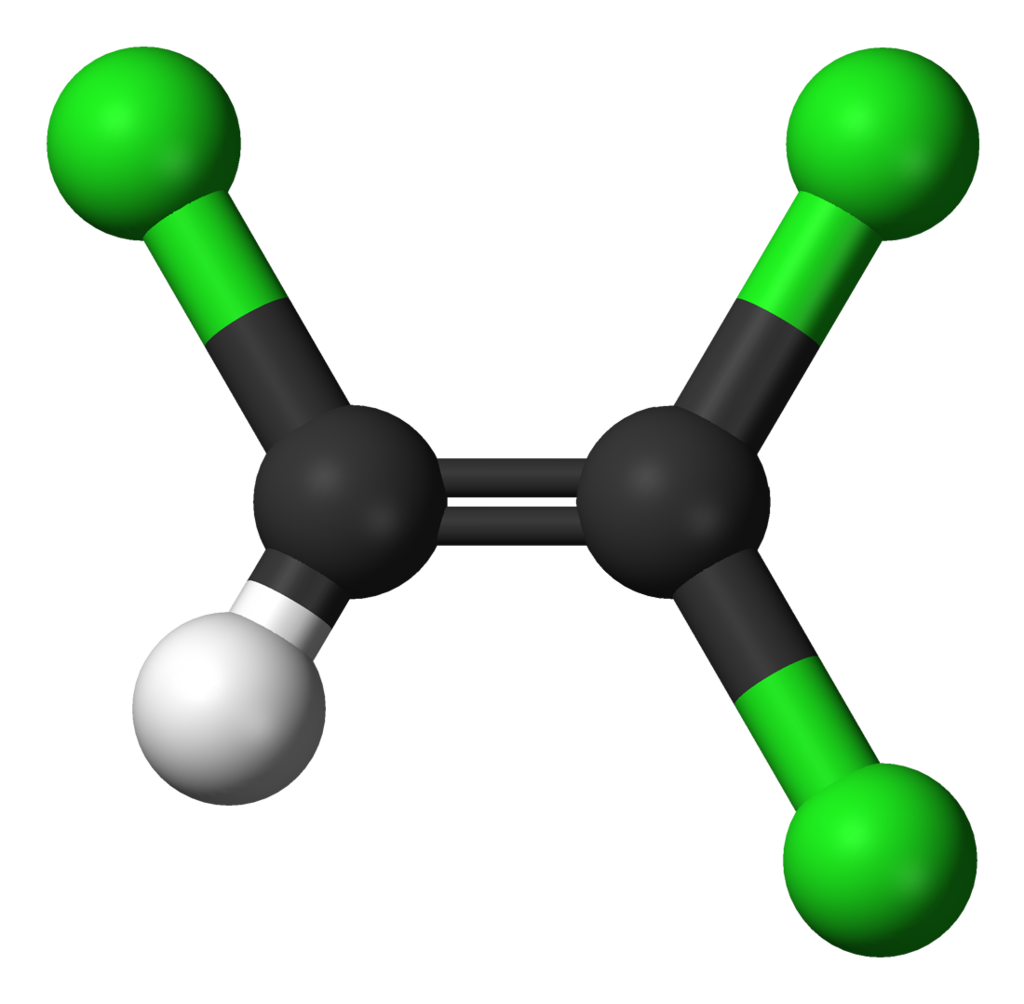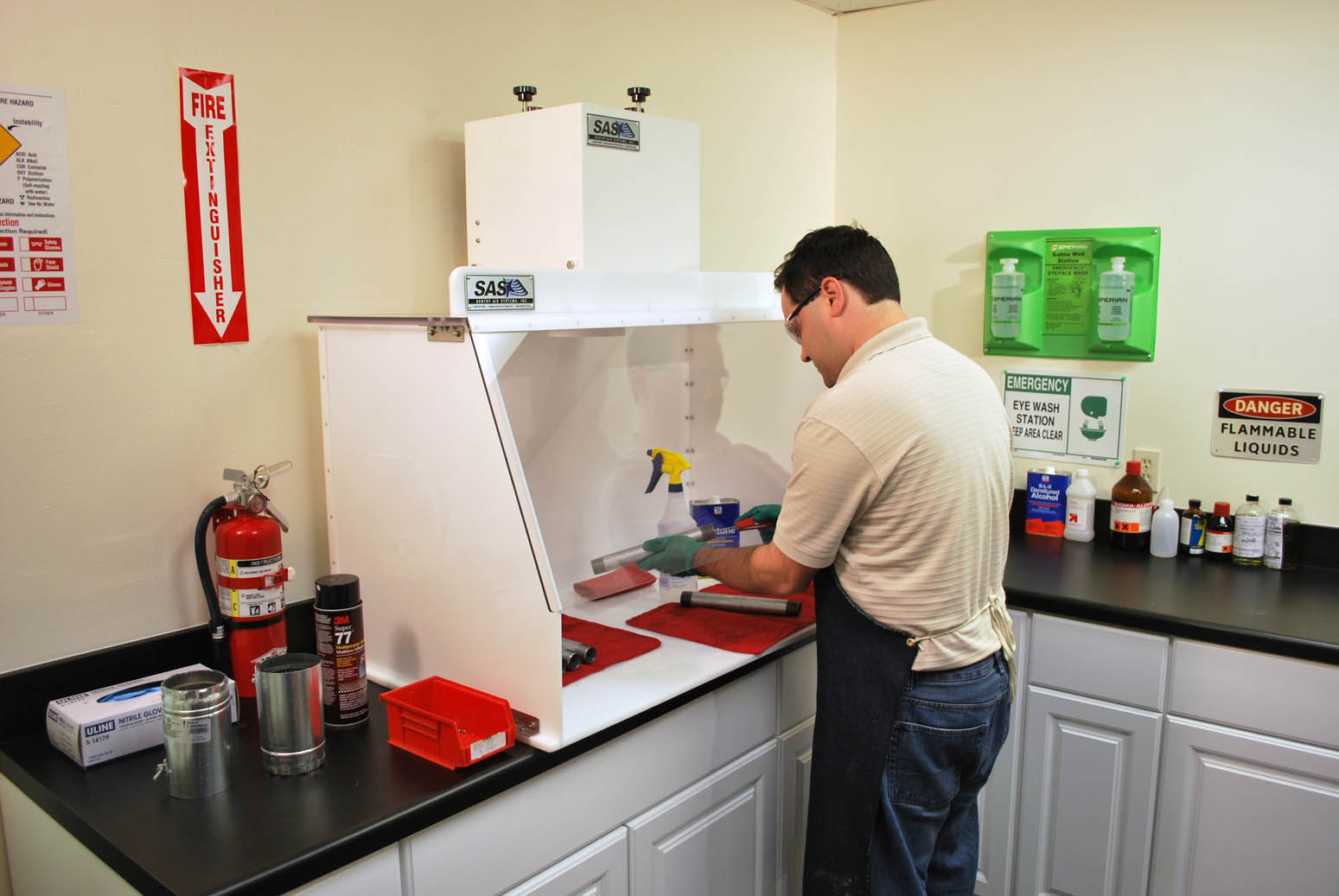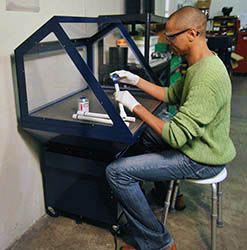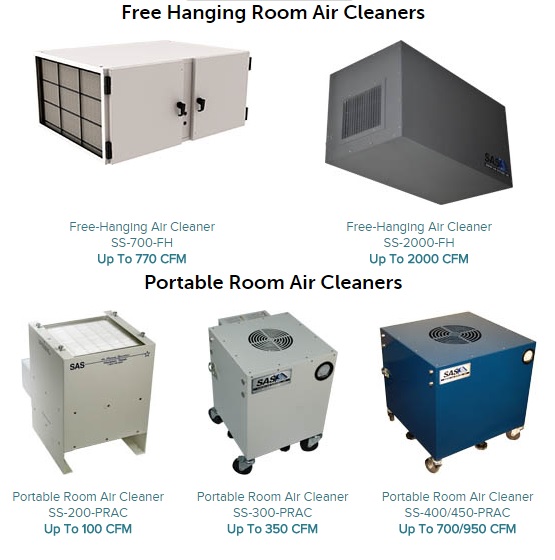 According to chemical summary published by the EPA, trichloroethylene (TCE) is a volatile organic chemical used primarily as an industrial solvent. TCE is a colorless or blue liquid with a sweet, chloroform-like odor. The most common use of TCE is to remove grease from fabricated metal parts and some textiles. It is also an ingredient in adhesives, paint removers, typewriter correction fluids, rug-cleaning fluids, spot removers, and pepper sprays.
According to chemical summary published by the EPA, trichloroethylene (TCE) is a volatile organic chemical used primarily as an industrial solvent. TCE is a colorless or blue liquid with a sweet, chloroform-like odor. The most common use of TCE is to remove grease from fabricated metal parts and some textiles. It is also an ingredient in adhesives, paint removers, typewriter correction fluids, rug-cleaning fluids, spot removers, and pepper sprays.
Because TCE readily evaporates at room temperature, it is important for workplaces that use this chemical to provide appropriate monitoring devices and room air filtration to protect workers from overexposure.
Hazards of Trichloroethylene
The International Agency for Research on Cancer (IARC) classifies Trichloroethylene in Group 1 – Carcinogenic to Humans. Many cancers have been evaluated, but there has been a focus on tumors of the kidney, liver, and non-Hodgkin lymphoma.
Noted below are some excerpts from the Agency for Toxic Substances & Disease Registry’s Public Health Statement for Trichloroethylene:
- Exposure: Trichloroethylene in air can easily enter your body when you breathe. Most of the trichloroethylene that you breathe in will go into your bloodstream and into other organs. A small amount of trichloroethylene in the air can also move through your skin and into your bloodstream.
- Health Effects: Once in your blood, your liver changes much of the trichloroethylene into other chemicals. The health effects of trichloroethylene depend on how much trichloroethylene you are exposed to and the length of that exposure.
- Long Term Effects: Exposure to trichloroethylene in the workplace may cause scleroderma (a systemic autoimmune disease) in some people.
- Short Term Effects: People who are overexposed to moderate amounts of trichloroethylene may experience headaches, dizziness, and sleepiness; large amounts of trichloroethylene may cause coma and even death. Some people who breathe high levels of trichloroethylene may develop damage to some of the nerves in the face. Other effects seen in people exposed to high levels of trichloroethylene include evidence of nervous system effects related to hearing, seeing, and balance, and changes in the rhythm of the heartbeat, liver damage, and evidence of kidney damage.
Occupational Exposure Limits
Several health and safety agencies provide recommended or mandatory exposure limits for trichloroethylene. CAL-OSHA and NIOSH both recommend a 25 ppm limit TWA. This means that within an 8 hour shift the average concentration of TCE cannot be more than 25 parts per 1 million parts of air.
While all employers are required to meet the OSHA PEL of 100 ppm, many companies have adopted stricter exposure limits in light of newer studies and research on TCE’s health effects.
| Occupational Exposure Limits: Trichloroethylene | |||
| OSHA PEL | CAL OSHA PEL | NIOSH REL | ACGIH TLV |
| 100 ppm TWA | 25 ppm TWA | 25 ppm TWA | 10 ppm TWA |
Source Capture Vapor Control
The idea of capturing fume at the source of emission is called “source capture”. Source capture filtration systems work to pull harmful fume and dust away from the operator’s breathing zone before inhalation of these hazards can occur.
Usually placed within five inches of the source, these systems draw contaminated air away from the operator and into either a recirculating filtration unit (ductless) or out through a building’s exhaust system (ducted).
Sentry Air offers several configurations of ductless source capture fume extraction. Depending on the application, we have benchtop units, wall mounted units, and floor units.
Some of our most popular items for parts cleaning and solvent use are our Ductless Fume Hoods, Downdraft Benches, and Wall Mounted “Sky” units.

Ductless Fume Hoods
24”, 30”, 40”, 50”, 60”, 70” Standard Widths
Up to 60 FPM w/ Pre-Filter and Carbon Filter
Custom sizes and features available

Downdraft Benches Table Style Portable Style – Sitting Height (shown) Portable Style – Standing Height Up to 700 CFM
Ambient Vapor Removal
Some workplaces and operations may generate what is known as “renegade fume”. Renegade fume is an accumulation of mist, smoke or fume that is found in ambient room air. This can occur in environments that are not adequately ventilated or where several workstations are operating simultaneously.
For example, in an area designated for parts cleaning where solvent use is high, a source capture fume extractor will take the brunt of the work. However, when these parts are placed on open shelving to dry, they will off gas these solvent fumes for hours, thus generating renegade fume.
 As part of a comprehensive industrial hygiene plan, the coupling of source capture fume extraction with ambient room air cleaners offers enhanced filtration and protection from respiratory hazards. Sentry Air Systems has a line of portable and ceiling-mounted room air cleaners for the capture of renegade fume.
As part of a comprehensive industrial hygiene plan, the coupling of source capture fume extraction with ambient room air cleaners offers enhanced filtration and protection from respiratory hazards. Sentry Air Systems has a line of portable and ceiling-mounted room air cleaners for the capture of renegade fume.
One item in particular, the Model 700, offers both HEPA and Carbon filtration for the capture of dust and vapor. The Model 700 can hang from the ceiling, mount to our fume extractor stand, or be placed on a cart for easy portability.
Activated Carbon Filtration
 Granule activated carbon is widely known and used for pollutant removal applications like air purification and water filtration.
Granule activated carbon is widely known and used for pollutant removal applications like air purification and water filtration.
At Sentry Air Systems, we use activated carbon granules in our carbon filters for the adsorption and filtration of chemical molecules.
There are thousands of granules in our carbon filters and each granule works to adsorb chemical molecules within its vein-like internal structure. As contaminated air passes through the carbon filter, harmful molecules are trapped so that cleansed air is able to recirculate.
On our Activated Carbon Adsorption Ratings chart located on our website, trichloroethylene is rated an “E” for Excellent High Capacity. This means that each pound of activated carbon will adsorb an average of 33 ⅓% of its weight for the specified compound.
Watch a brief video demonstrating how Sentry Air carbon filters work to adsorb chemical molecules.
Contact Us
If your workplace or application uses trichloroethylene or products containing it, speak with a Sentry Air Systems sales specialist for the most appropriate fume extraction solution. Call 800.799.4609, email sales@sentryair.com, visit our website or fill out the feedback form below.
Resources
Previous Blog: EPA released final risk assessment on Trichloroethylene (TCE)
Bureau of Toxic Substance Assessment New York State Department of Health: TRICHLOROETHENE (TCE) IN INDOOR AND OUTDOOR AIR

 Made in the USA
Made in the USA
